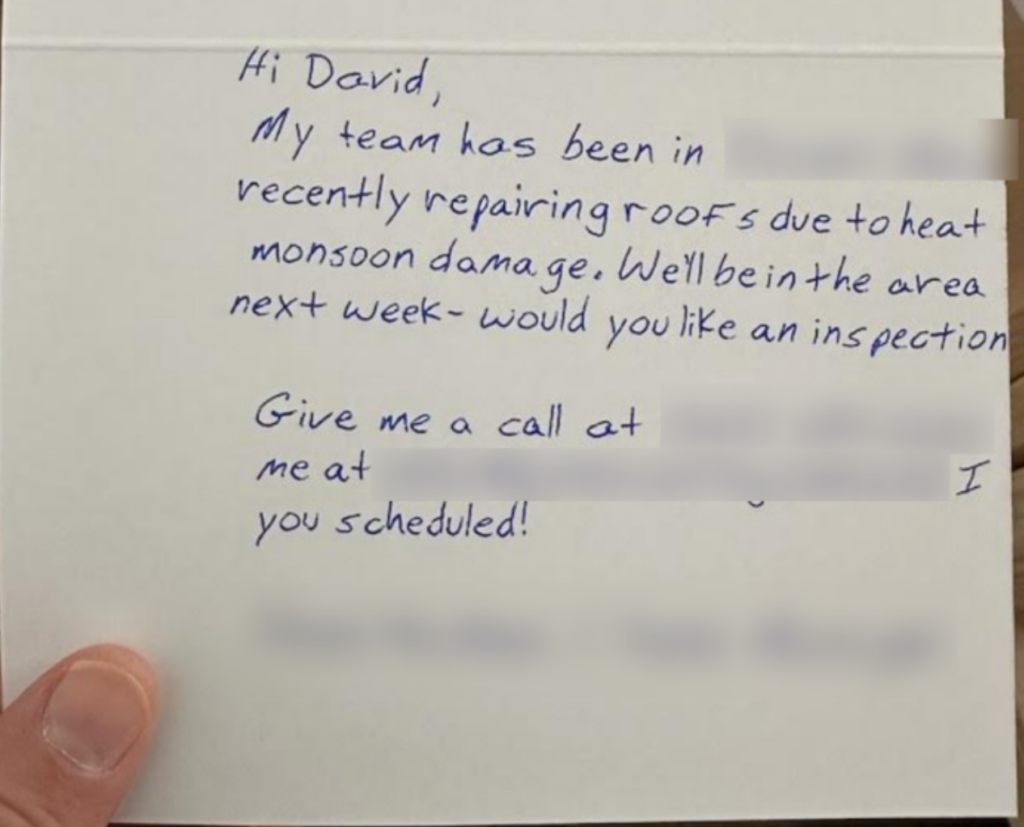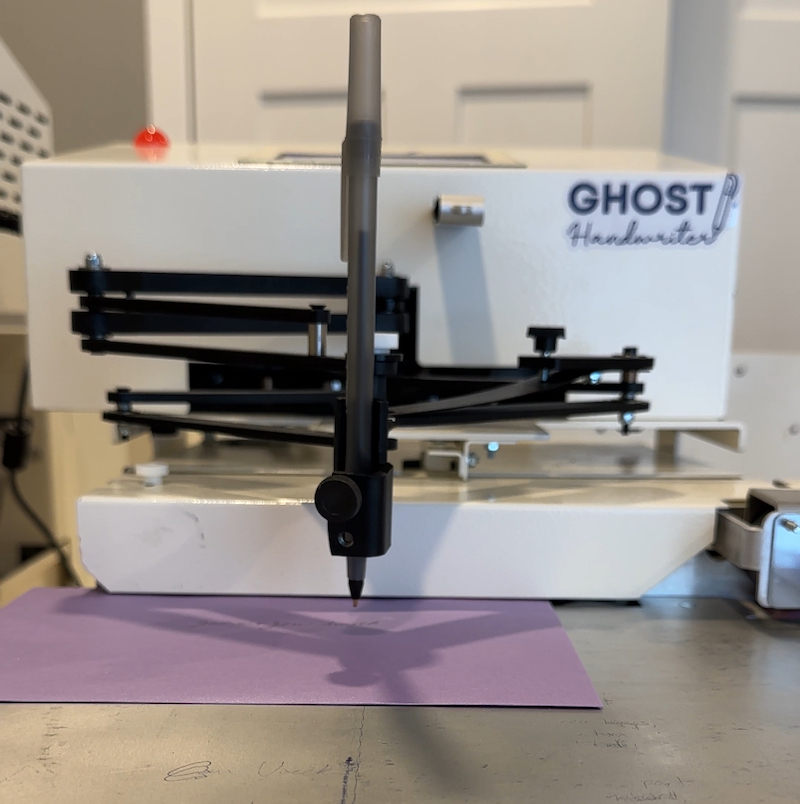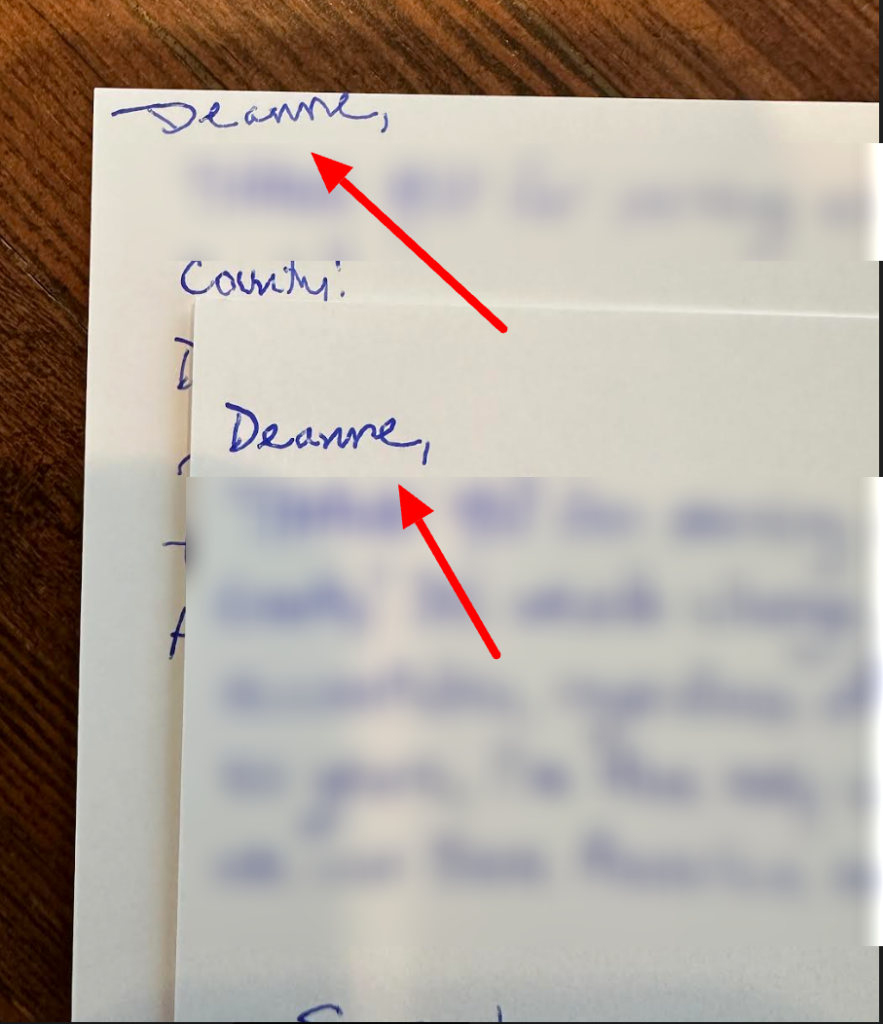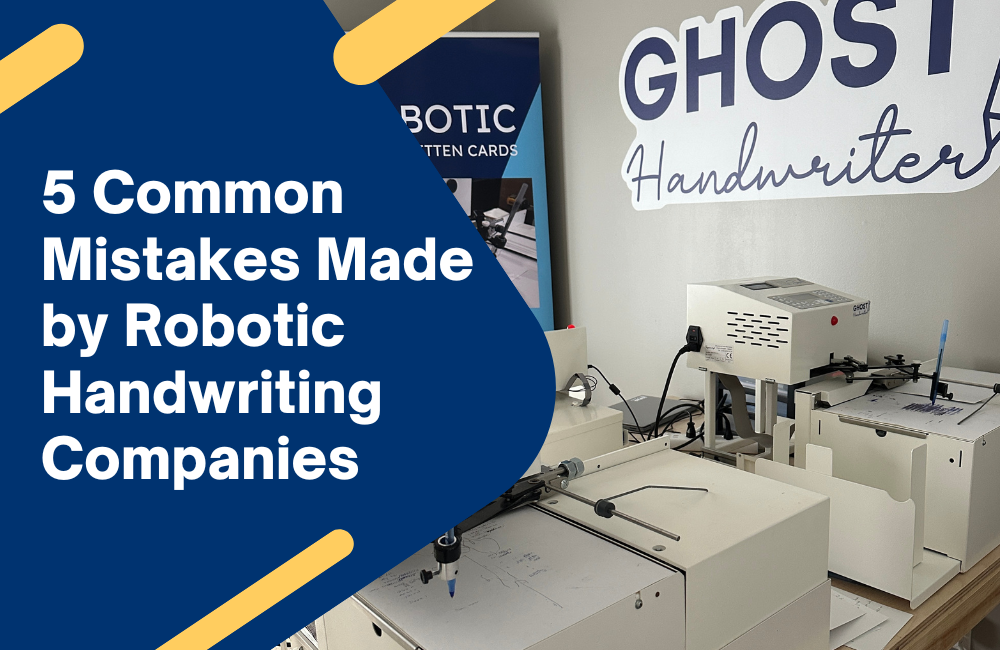There are a ton of robot handwriting companies out there for you to choose from and there are also tons of opportunity in the production process to make mistakes. (And deliver sub-par products.)
Having ran thousands upon thousands of cards for campaigns ranging from non-profits to politicians I can confidently say that these are the most common errors when it comes to your handwritten cards.
1. Incorrect Paper Feeding
Robots are great, but they are imperfect. So if a paper feeds only halfway to where it needs to sit, the robot handwriting machine will still composs the message regardless of it the paper is only halfway written on. (See Below)

This is one of the reasons we resist using an automatic stuffing machine because it will insert and seal an erroneous piece of mail. By manually inserting it (using our small army of teenagers) we are able to detect mistakes, reprint them, and ensure that your campaign is error free.
Psst…not many other automated handwriting companies can say that.
2. Wrong Paper Setup
So it turns out that robots can feed paper incorrect and humans can also do the same. When I’ve had to load up the paper or envelopes I’ve made the mistake of orienting it incorrectly.
It has become a practice for me to triple check the orientation of the paper or envelope to ensure it is laid correctly before I start running a campaign. In making mistakes and running out of paper, I’ve had to eat the cost of ordering more and ensuring my local printing company can do a quick turnaround on prints.
Lesson learned.
Even vendors I’ve used have packaged paper or envelopes oriented in different ways so I still have to check even when I receive it from a printing company (and not assume they’re all facing the same direction).
3. Running Out of Ink
I’ve unfortunately really stretched out the lifespan of a standard Bic pen and let it run too long without changing it. The result was several cards for a campaign that were written with very faint letters and had to be reprinted (on my dime and time).
Fun Fact: I’ve learned that a standard Bic pen can write anywhere from 1000-1200 greeting cards before it needs to be swapped out.
Second Fun Fact: I usually swap pens out around 800 cards so I don’t tiptoe that line and have to reprint.
4. Pen Distance
There is a exact science to how the pen is angled and the distance you maintain from the machine arm to the paper.
When it’s too far away, the ink looks very faint and non-believable.
When it’s too close, the message can drag between words and look non-believable as well.
We are constantly testing during a production run that the distance of the pen can write out the entire message perfectly.

5. Names Too Close to the Margin
Our automatic handwriting software has different ways we can set up the job and sometimes you have to be extra mindful of assigning the correct margins.
When the beginning of a message is too close to the “edge” then it can result in improper looking letters. (See below)

This, again, is another mistake that we make a point to identify and catch during the QA and stuffing process so we ensure that all your cards go out perfectly.
Summary
I recently finished a great business book by Andrew Wilkinson called “Never Enough” and he talks about the difference between Flesh Wounds vs. Mortal Wounds.
And I quote, “Failures, on the other hand, resulted in learning that would inform future decisions- flesh wounds that created valuable scar tissue.”
These are all the “flesh wounds” I have incurred running our robot handwriting company that have made me sharper, less prone to mistakes, and more committed in ensuring you get a quality handwritten card when you decide to work with us.
I invite you to book a call and see how we can light up your outreach efforts!

